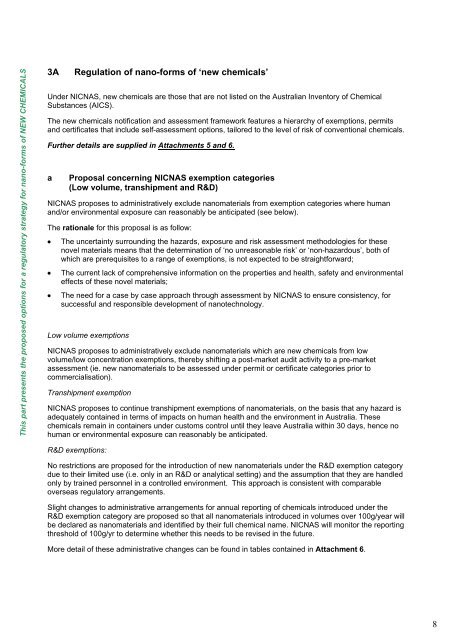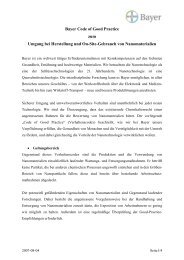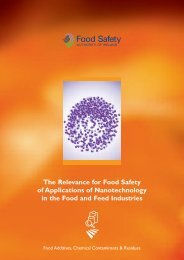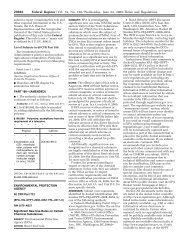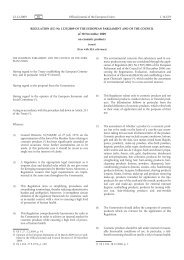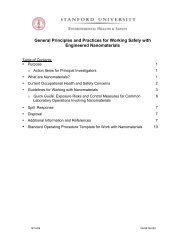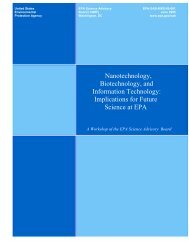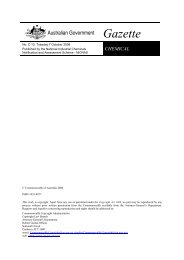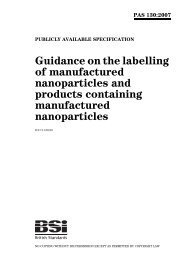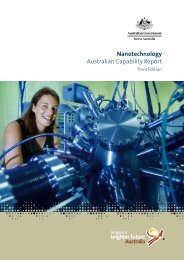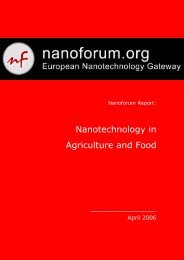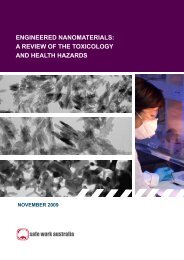Proposal for Regulatory Reform of Industrial Nanomaterials
Proposal for Regulatory Reform of Industrial Nanomaterials
Proposal for Regulatory Reform of Industrial Nanomaterials
Create successful ePaper yourself
Turn your PDF publications into a flip-book with our unique Google optimized e-Paper software.
This part presents the proposed options <strong>for</strong> a regulatory strategy <strong>for</strong> nano-<strong>for</strong>ms <strong>of</strong> NEW CHEMICALS3ARegulation <strong>of</strong> nano-<strong>for</strong>ms <strong>of</strong> ‘new chemicals’Under NICNAS, new chemicals are those that are not listed on the Australian Inventory <strong>of</strong> ChemicalSubstances (AICS).The new chemicals notification and assessment framework features a hierarchy <strong>of</strong> exemptions, permitsand certificates that include self-assessment options, tailored to the level <strong>of</strong> risk <strong>of</strong> conventional chemicals.Further details are supplied in Attachments 5 and 6.a<strong>Proposal</strong> concerning NICNAS exemption categories(Low volume, transhipment and R&D)NICNAS proposes to administratively exclude nanomaterials from exemption categories where humanand/or environmental exposure can reasonably be anticipated (see below).The rationale <strong>for</strong> this proposal is as follow:• The uncertainty surrounding the hazards, exposure and risk assessment methodologies <strong>for</strong> thesenovel materials means that the determination <strong>of</strong> ‘no unreasonable risk’ or ‘non-hazardous’, both <strong>of</strong>which are prerequisites to a range <strong>of</strong> exemptions, is not expected to be straight<strong>for</strong>ward;• The current lack <strong>of</strong> comprehensive in<strong>for</strong>mation on the properties and health, safety and environmentaleffects <strong>of</strong> these novel materials;• The need <strong>for</strong> a case by case approach through assessment by NICNAS to ensure consistency, <strong>for</strong>successful and responsible development <strong>of</strong> nanotechnology.Low volume exemptionsNICNAS proposes to administratively exclude nanomaterials which are new chemicals from lowvolume/low concentration exemptions, thereby shifting a post-market audit activity to a pre-marketassessment (ie. new nanomaterials to be assessed under permit or certificate categories prior tocommercialisation).Transhipment exemptionNICNAS proposes to continue transhipment exemptions <strong>of</strong> nanomaterials, on the basis that any hazard isadequately contained in terms <strong>of</strong> impacts on human health and the environment in Australia. Thesechemicals remain in containers under customs control until they leave Australia within 30 days, hence nohuman or environmental exposure can reasonably be anticipated.R&D exemptions:No restrictions are proposed <strong>for</strong> the introduction <strong>of</strong> new nanomaterials under the R&D exemption categorydue to their limited use (i.e. only in an R&D or analytical setting) and the assumption that they are handledonly by trained personnel in a controlled environment. This approach is consistent with comparableoverseas regulatory arrangements.Slight changes to administrative arrangements <strong>for</strong> annual reporting <strong>of</strong> chemicals introduced under theR&D exemption category are proposed so that all nanomaterials introduced in volumes over 100g/year willbe declared as nanomaterials and identified by their full chemical name. NICNAS will monitor the reportingthreshold <strong>of</strong> 100g/yr to determine whether this needs to be revised in the future.More detail <strong>of</strong> these administrative changes can be found in tables contained in Attachment 6.8


